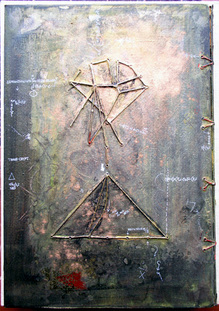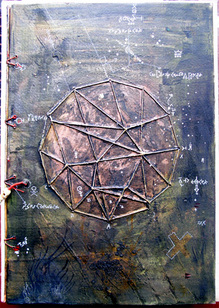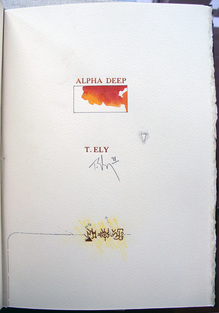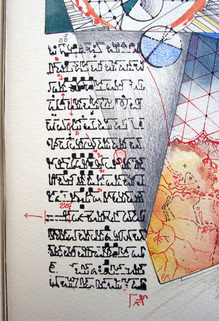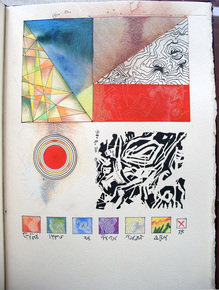The letterforms that Ely uses are as much a part of the visual imagery as the pictures. He calls the font “cribriform.” When I searched this on Google, a medical dictionary popped up with the definition “Perforated like a sieve.” The artist writes, “I liked the idea that there were these vessels that could hold meaning, and that they had holes.
Collectors stand in line, waiting for Ely to finish these one-of-a-kind artists’ books, which he began making in 1971. Ely trained as a designer and printmaker. He has an MFA from the University of Washington and received a grant from the National Endowment for the Arts to study book binding in Japan, Italy, and England.
Ely writes visual stories, not to be confused with graphic novels. His narratives are anything but linear. “I like the idea of making an art that forces you to confront the mystery,” Ely says. “No matter how you try to deal with it, there is no solution.”
His website lists his influences as, “comic books, Steam Punk design and the study of history, religion, and sociological and psychological phenomena. The works often include soil, sand, and other detritus from pertinent sites around the globe, metals, pigments, textiles, inks, resins, and wax.” http://www.timothyely.com/
Graphic Arts also owns Daniel Berrigan, Lost & Found, illustrated by Timothy Ely ([Montclair, N.J.]: Caliban Press, 1989).Copy no. 86 of 125. Graphic Arts Collection (GAX) 2004-3443N
